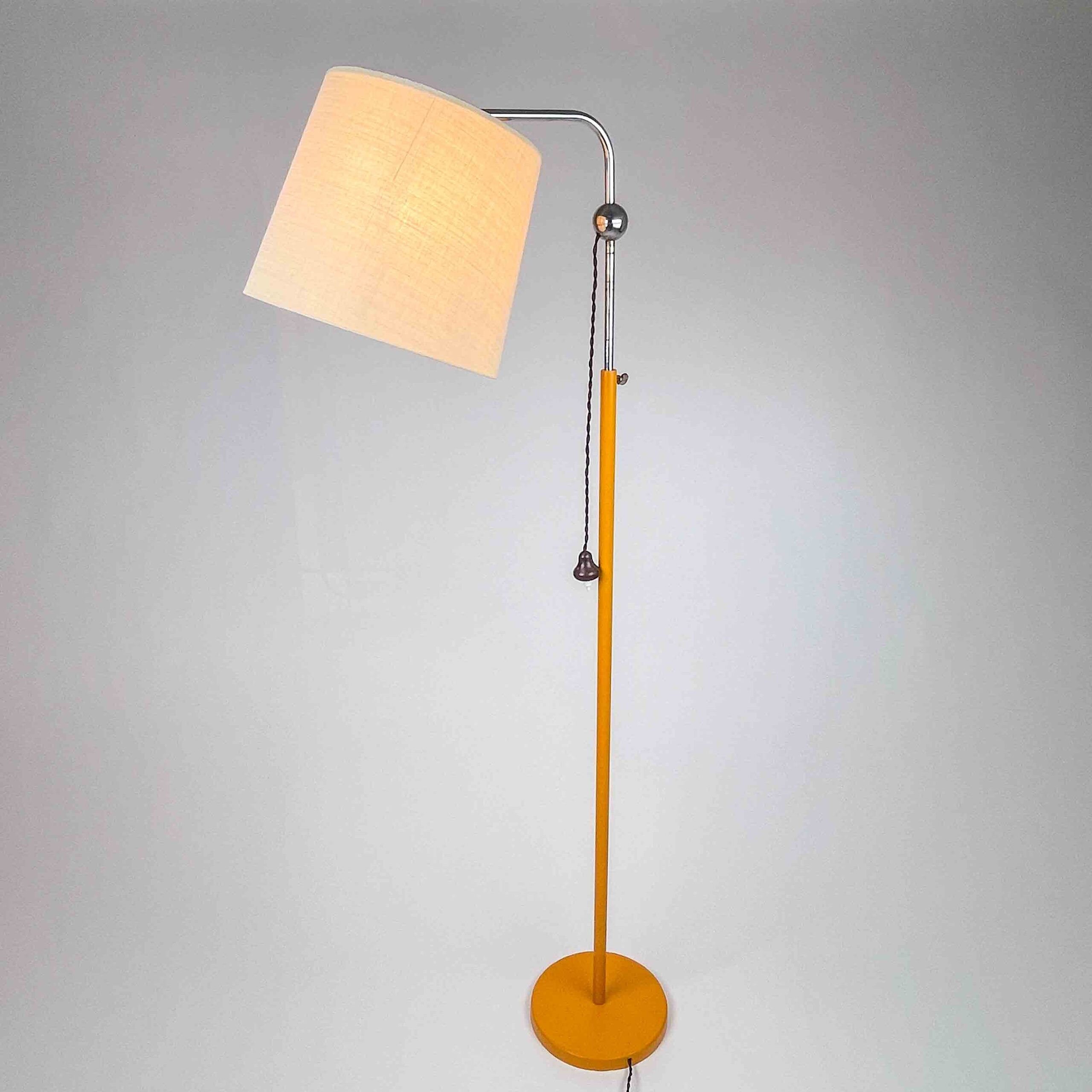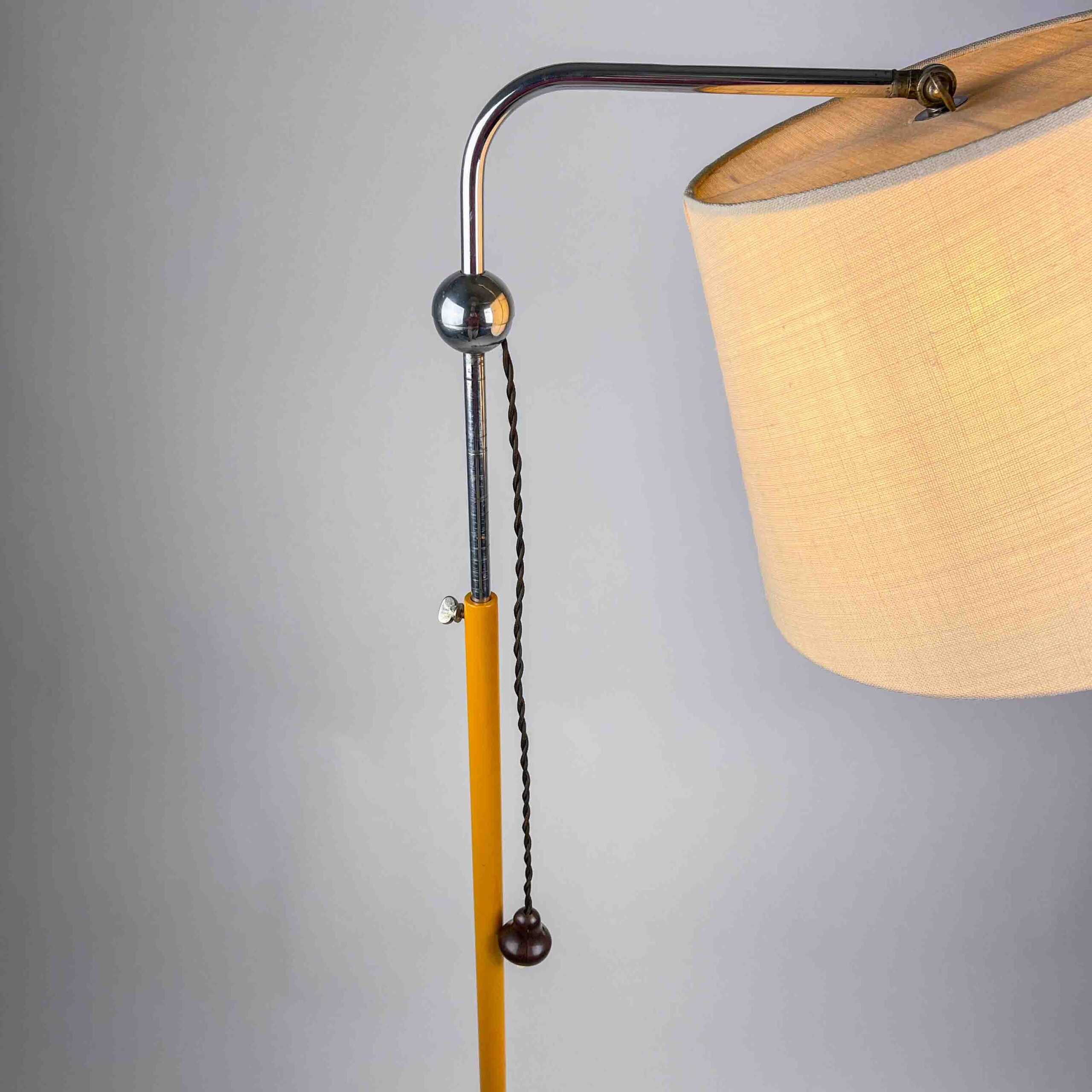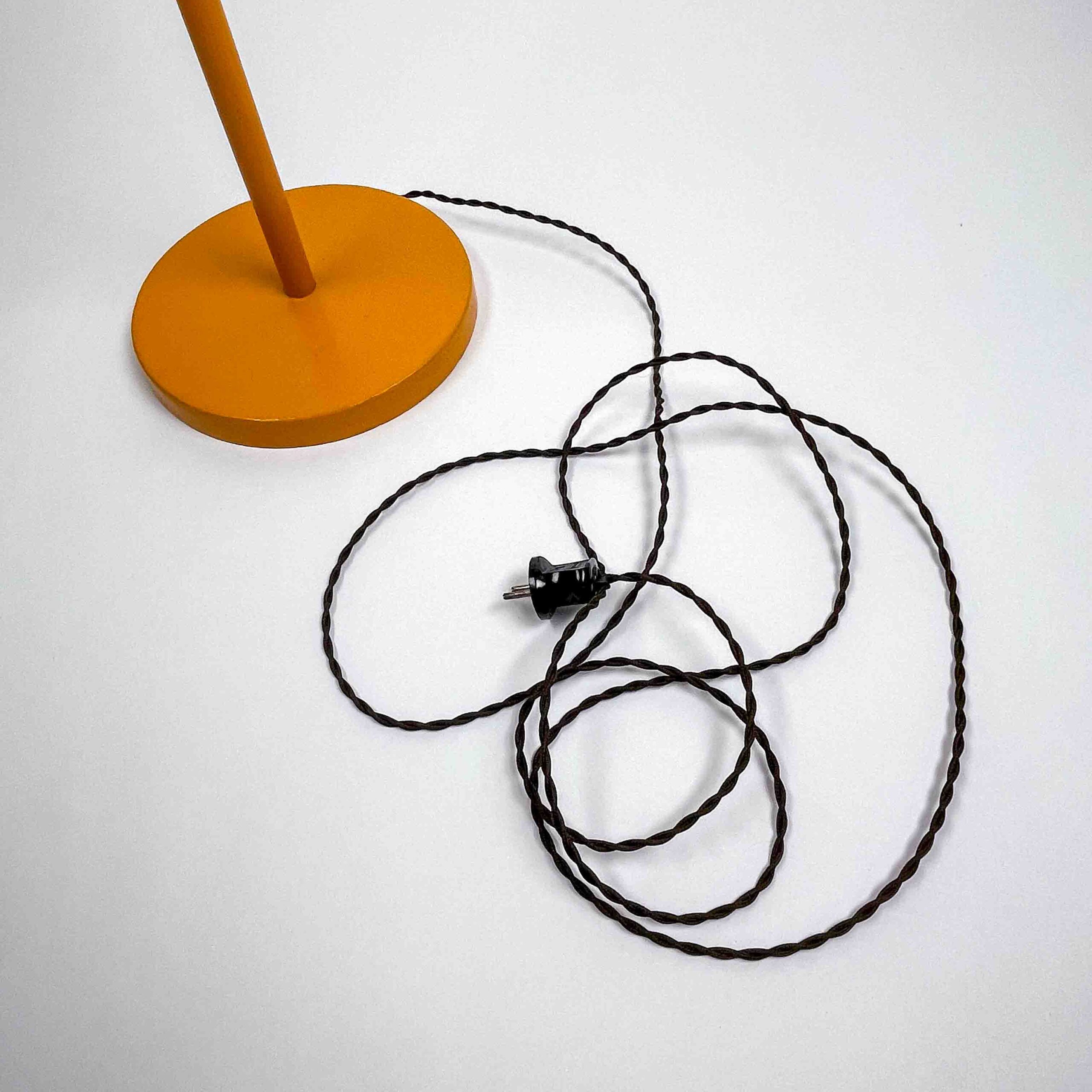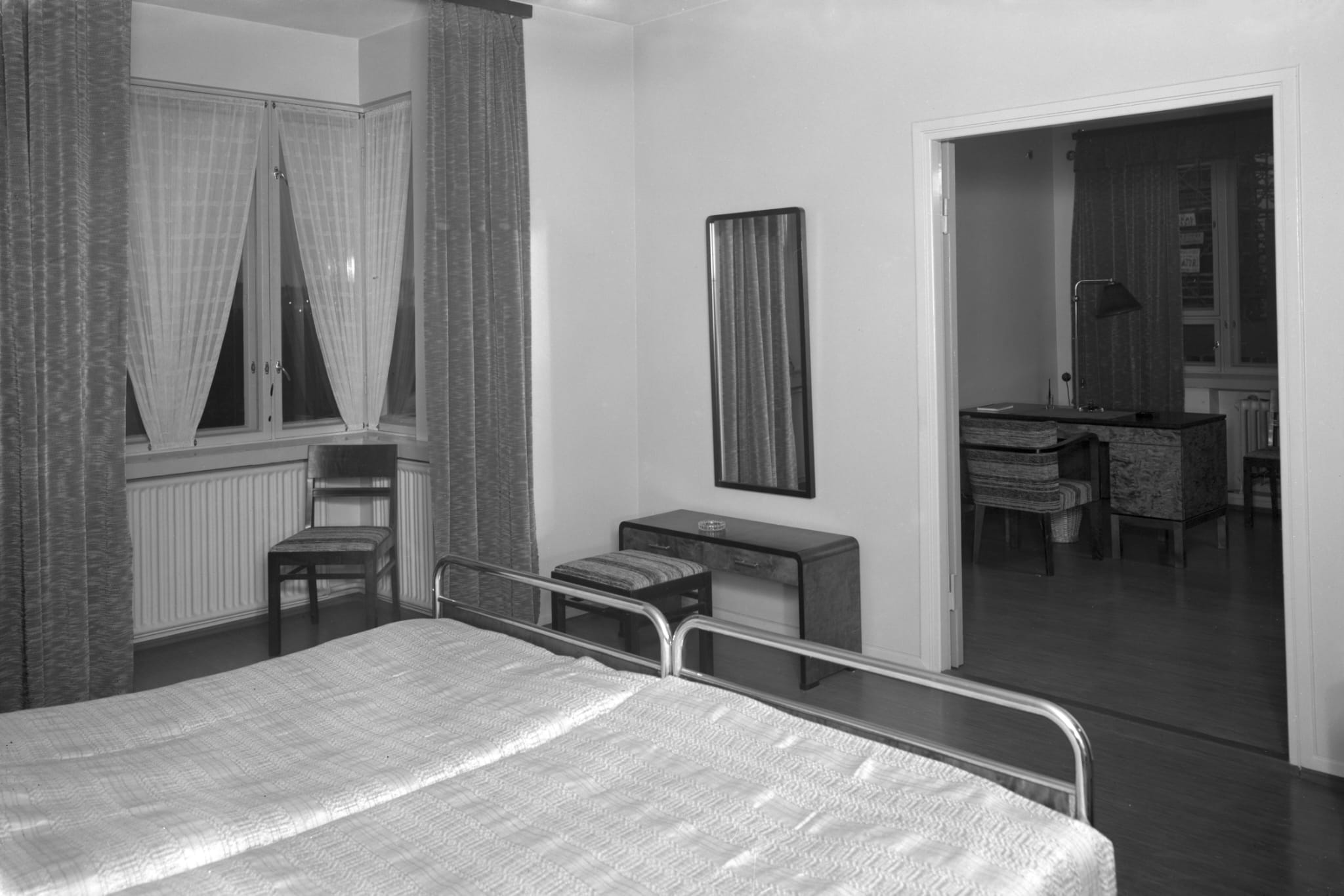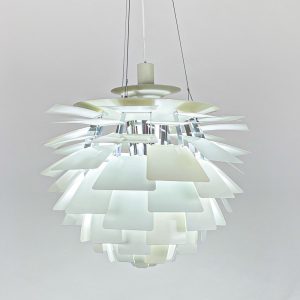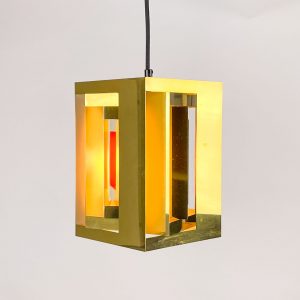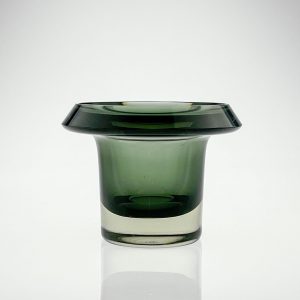| Marked | unmarked, well documented |
|---|---|
| Execution | Taito Oy, Helsinki 1936 |
| Condition | Good original condition. Wear consistent with age and use. Minor restorations on paint, Rewired. |
| Literature | Ville Linna, Chasing Light: The Archival Photographs and Drawings of |
| Dimensions | Height 150 cm (adjustable) |
Paavo Tynell – Made to order “Emmaus” floorlight – Taito Oy, Helsinki 1936
€4,000.00
Beschikbaarheid: 1 op voorraad
A painted and chromed steel adjustable floorlight with handmade linnen shade. Designed by Paavo Tynell and made to order by Taito Oy, Helsinki in 1936.
The lamp was commissioned by Taito Oy in 1936 for the Emmaus Hotel in Tampere, Finland. When completed in 1936, this hotel was
the largest hotel in Finland and even in 1936 the largest in all of Scandinavia. The hotel was designed by architects Bertel Strömmer and Heikki Tiitola in a very modern functionalist style. Taito Oy was responsible for all lighting in the hotel. Paavo Tynell was director of Taito Oy and responsible for all lighting designs.
In July 1936, a photographic report of the interior and exterior of the hotel. The photos show several of Tynell / Taito’s lamps including the ceiling lamps model 1917, model 1621 and the wall lamp model 7202. But of particular note is that in the photo of the en-suite room, this floor lamp is immortalised.
This floor lamp was never made in serial production and is not marked but, as already mentioned, specially commissioned for the Emmaus.
In construction, the lamp corresponds to lamps that were manufactured by Taito in serial production. For example: an identical bakelite switch was used on model 9613, the base of the Emmaus lamp bears many similarities to model 5707, the sliding construction and shape of the chrome tube is similar to model 5754 and the fastening of the adjustable lampshade (with characteristic wing nut) is again similar to model 5753. All mentioned
models were available in 1935, as evidenced by the Taito catalogue no.10 from 1935.
The linnen shade is handmade and later added, most likely during a restyling of the hotel in in the early 1960’s. Apart from the later shade the lamp is fully original with bakelite switch and socket. We had the lamp professionally restored (paint retouched and rewired).
About Paavo Tynell
Paavo Tynell (1890-1973) saw the light of day in Helsinki, twelve years after the introduction of the light bulb, at a time when Finland and most of northern Europe were still in the process of electrification. His birth marked the beginning of his journey to become a leading pioneer of modern lighting, in parallel with the spread of electric light around the world. By the year of his death in 1973, Tynell was entrenched as ‘the man who enlightened Finland’.
In his early years, it seemed unlikely that Tynell would become one of the most influential designers of his time. He was the seventh of nine children in a working-class family that could not afford further education for him after primary school. At the age of 16 he began his apprenticeship at G.M. Sohlberg’s metal workshop, where he worked as a sheet metal worker for six years before becoming a blacksmith for another year. During these formative years, Tynell created his first lamp fixturemade of brass, which would later become his signature material.
In 1918, together with his former teacher Ehrström, Tynell founded metal smith Frans Nykänen, sculptor Emil Wickström and industrialist
Gösta Serlachius the company Taito Oy. As managing director, Tynell led the production of various lighting fixtures, functional metal objects, sculptures and custom-made designs from the foundry of the company.
During the 1920s, Tynell was the principal designer at Taito, assisted by other talented designers and artists such as Alvar Aalto, Henry Ericsson and Ville Vallgren. By the 1930s Taito concentrated exclusively on lighting and played a crucial role in the growing electrification of independent Finland.
Internationally, Tynell enjoyed fame, with notable projects such as the lighting of the Parliament building in Helsinki, designed by architect Johan Sigfrid Sirén, and collaborations with leading modernist architects, notably Alvar Aalto.
The 1930s and 1940s were a period of experimentation for Tynell. His design style evolved from functionalist and art deco designs to more decorative and elegant expressions. During this time, he served as president of Ornamo, the Finnish association of industrial designers, where he supported and trained young designers. His influence extended extended beyond Finland, especially in the United States, where he almost
became a celebrity.
After World War II, Tynell returned to brass as his signature material, creating unique lamps that combined traditional aesthetics with a modern look.
Brass quickly became the signature of Taito, which now had about 150 employees. From the 1930s to the 1950s, Tynell was considered as Finland’s leading lighting designer and he was frequently asked to illuminate public spaces across the country,
particularly in Helsinki, where his lighting is still an integral part of the city structure.
His influence also extended internationally, especially in the US, where he achieved great success as a designer achieved great success. Taito’s merger with the lighting factory Idman Oy in 1953 led to Tynell’s retirement as director, but he continued to design for Taito and other lighting brands in Finland and abroad. His collaboration with the respected brand Lightolier in the US continued until 1966. Tynell’s legacy continues to shine, not only in Finland, but worldwide, as an icon of innovation in the world of lighting design.



